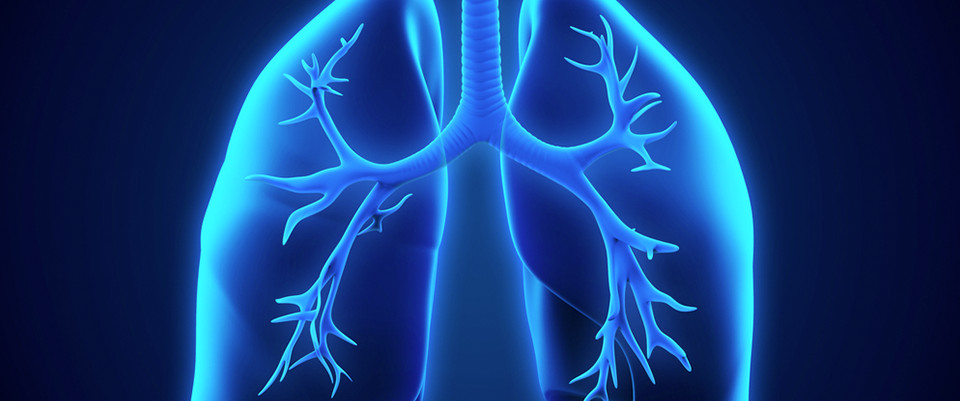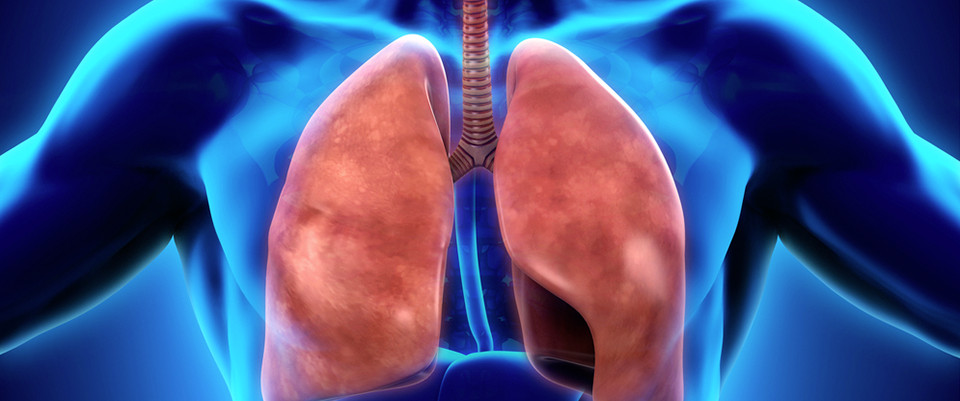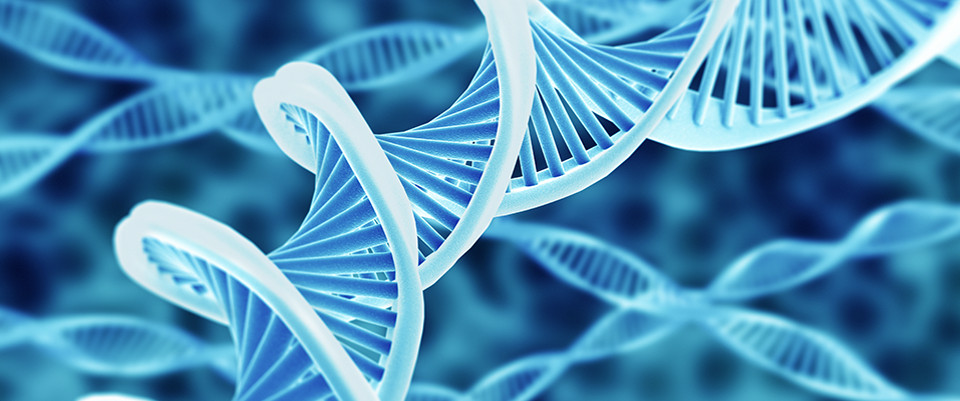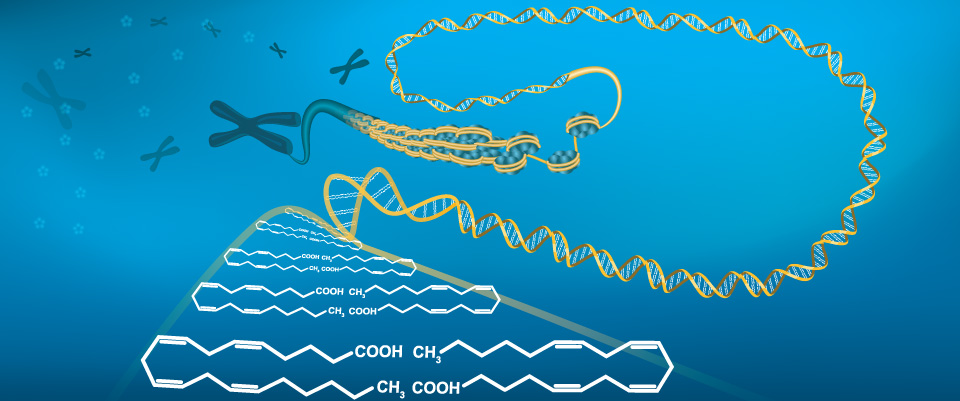PubMed
Tumor-Stroma Mechanics Coordinate Amino Acid Availability to Sustain Tumor Growth and Malignancy.
Related Articles
Tumor-Stroma Mechanics Coordinate Amino Acid Availability to Sustain Tumor Growth and Malignancy.
Cell Metab. 2018 Sep 28;:
Authors: Bertero T, Oldham WM, Grasset EM, Bourget I, Boulter E, Pisano S, Hofman P, Bellvert F, Meneguzzi G, Bulavin DV, Estrach S, Feral CC, Chan SY, Bozec A, Gaggioli C
Abstract
Dysregulation of extracellular matrix (ECM) deposition and cellular metabolism promotes tumor aggressiveness by sustaining the activity of key growth, invasion, and survival pathways. Yet mechanisms by which biophysical properties of ECM relate to metabolic processes and tumor progression remain undefined. In both cancer cells and carcinoma-associated fibroblasts (CAFs), we found that ECM stiffening mechanoactivates glycolysis and glutamine metabolism and thus coordinates non-essential amino acid flux within the tumor niche. Specifically, we demonstrate a metabolic crosstalk between CAF and cancer cells in which CAF-derived aspartate sustains cancer cell proliferation, while cancer cell-derived glutamate balances the redox state of CAFs to promote ECM remodeling. Collectively, our findings link mechanical stimuli to dysregulated tumor metabolism and thereby highlight a new metabolic network within tumors in which diverse fuel sources are used to promote growth and aggressiveness. Furthermore, this study identifies potential metabolic drug targets for therapeutic development in cancer.
PMID: 30293773 [PubMed - as supplied by publisher]
Human metabolomics reveal daily variations under nutritional challenges specific to serum and skeletal muscle.
Related Articles
Human metabolomics reveal daily variations under nutritional challenges specific to serum and skeletal muscle.
Mol Metab. 2018 Oct;16:1-11
Authors: Sato S, Parr EB, Devlin BL, Hawley JA, Sassone-Corsi P
Abstract
OBJECTIVE: Advances in the field of metabolomics and the concomitant development of bioinformatics tools constitute a promising avenue towards the development of precision medicine and personalized profiling for numerous disease states. Studies in animal models have strengthened this concept, but the application in human subjects is scarce.
METHODS: Utilizing high-throughput metabolomics, we have analyzed the metabolome levels of human serum and skeletal muscle in the morning and evening in response to divergent nutritional challenges in order to identify unique signatures present in serum and muscle.
RESULTS: We reveal dynamic daily variation of human metabolome unique to serum and muscle. The overall effect of nutritional challenges on the serum and muscle metabolome results in a profound rewiring of morning-evening metabolic profiles in human participants in response to the timing and type of dietary challenge.
CONCLUSION: We highlight time-of-day and meal-composition dependence of reprogramming of human metabolome by nutritional challenges.
PMID: 30293576 [PubMed - in process]
Evaluation of cardiac arrhythmic risks using a rabbit model of left ventricular systolic dysfunction.
Related Articles
Evaluation of cardiac arrhythmic risks using a rabbit model of left ventricular systolic dysfunction.
Eur J Pharmacol. 2018 Aug 05;832:145-155
Authors: Hemmeryckx B, Feng Y, Frederix L, Lox M, Trenson S, Vreeken R, Lu HR, Gallacher D, Ni Y, Lijnen HR
Abstract
Patients with heart disease have a higher risk to develop cardiac arrhythmias, either spontaneously or drug-induced. In this study, we have used a rabbit model of myocardial infarction (MI) with severe left ventricular systolic dysfunction (LVSD) to study potential drug-induced cardiac risks with N-(piperidin-2-ylmethyl)-2,5-bis(2,2,2-trifluoroethoxy)benzamide (flecainide). Upon ligation of the left circumflex arteries, male New Zealand White rabbits developed a large MI and moderate or severe LVSD 7 weeks after surgery, in comparison to SHAM-operated animals. Subsequently, animals were exposed to escalating doses of flecainide (0.25-4 mg/kg) or solvent. Electrocardiograms (ECG) were recorded before surgery, 1 and 7 weeks after surgery and continuously during the drug protocol. The ECG biomarker iCEB (index of Cardio-Electrophysiological Balance = QT/QRS ratio) was calculated. During the ECG recording at week 1 and week 7 post MI, rabbits had no spontaneous cardiac arrhythmias. When rabbits were exposed to escalating doses of flecainide, 2 out of 5 rabbits with MI and moderate LVSD versus 0 out of 5 solvent-treated rabbits developed arrhythmias, such as ventricular tachycardia/ventricular fibrillation. These were preceded by a marked decrease of iCEB just before the onset (from 4.09 to 2.42 and from 5.56 to 2.25, respectively). Furthermore, 1 out of 5 MI rabbits with moderate LVSD and 1 out of 7 MI rabbits with severe LVSD developed total atrioventricular block after flecainide infusion and died. This rabbit model of MI and severe LVSD may be useful for preclinical evaluation of drug (similar mechanism as flecainide)-induced arrhythmic risks, which might be predicted by iCEB.
PMID: 29782862 [PubMed - indexed for MEDLINE]
metabolomics; +27 new citations
27 new pubmed citations were retrieved for your search.
Click on the search hyperlink below to display the complete search results:
metabolomics
These pubmed results were generated on 2018/10/08PubMed comprises more than millions of citations for biomedical literature from MEDLINE, life science journals, and online books.
Citations may include links to full-text content from PubMed Central and publisher web sites.
metabolomics; +27 new citations
27 new pubmed citations were retrieved for your search.
Click on the search hyperlink below to display the complete search results:
metabolomics
These pubmed results were generated on 2018/10/08PubMed comprises more than millions of citations for biomedical literature from MEDLINE, life science journals, and online books.
Citations may include links to full-text content from PubMed Central and publisher web sites.
Mutations of Mycobacterium tuberculosis induced by anti-tuberculosis treatment result in metabolism changes and elevation of ethambutol resistance.
Mutations of Mycobacterium tuberculosis induced by anti-tuberculosis treatment result in metabolism changes and elevation of ethambutol resistance.
Infect Genet Evol. 2018 Oct 03;:
Authors: Sun L, Zhang L, Wang T, Jiao W, Li Q, Yin Q, Li J, Qi H, Xu F, Shen C, Xiao J, Liu S, Mokrousov I, Huang H, Shen A
Abstract
Selective pressure from antibiotic use is one of the most important risk factors associated with the development of drug resistance in Mycobacterium tuberculosis (MTB). However, the mechanisms underlying drug resistance at the molecular level remain partly unclear. Therefore, the purpose of this study was to investigate the potential functional effect of novel mutations arising from anti-tuberculosis treatment. We analyzed two multidrug-resistant TB (MDR-TB) isolates from the same patient; one collected before and one almost a year after commencing MDR-TB treatment. The post-treatment isolate exhibited elevated ethambutol resistance. We sequenced the whole genomes of the two clinical isolates and detected six novel polymorphisms affecting the genes Rv1026, nc0021, Rv2155c, Rv2437, and Rv3696c, and the intergenic region between Rv2764c and Rv2765. Metabolomics approach was used to reveal the effect of the found variation on the metabolic pathways of MTB. Partial least squares-discriminant analysis showed a clear differentiation between the two isolates, involving a total of 175 metabolites. Pathway analysis showed that these metabolites are mainly involved in amino sugar and nucleotide sugar metabolism, β-alanine metabolism, sulfur metabolism, and galactose metabolism. The increased ethambutol resistance exhibited by the post-treatment MDR-TB strain could speculatively be linked to the identified genetic variations, which affected the synthesis of a number of metabolites associated with sources of carbon and energy. This may have been the main factor underlying the increased ethambutol resistance of this isolate.
PMID: 30292007 [PubMed - as supplied by publisher]
Multi-omics analysis: Repeated exposure of a 3D bronchial tissue culture to whole-cigarette smoke.
Multi-omics analysis: Repeated exposure of a 3D bronchial tissue culture to whole-cigarette smoke.
Toxicol In Vitro. 2018 Oct 03;:
Authors: Ishikawa S, Matsumura K, Kitamura N, Takanami Y, Ito S
Abstract
Cigarette smoke (CS) is a major risk factor in the development of chronic inflammatory lung diseases such as chronic obstructive pulmonary disease. A comprehensive investigation of the biological impacts of chronic CS exposure on lung tissue is therefore important for understanding the pathogenesis of lung disease. We used three-dimensional (3D) organotypic human bronchial tissue cultures and metabolomics, transcriptomics, and proteomics to investigate changes in biological processes affected by repeated whole-CS exposure. We found that CS perturbed central carbon metabolism in relation with oxidative stress responses. Epidermal growth factor receptor, which is involved in the early-stage pathogenesis of airway diseases, was identified as a key regulator of the perturbed processes. Proteomic analysis of proteins in the apical surface liquid of the 3D bronchial tissue cultures indicated that repeated whole-CS exposure induced alterations in the secretion of several known biomarkers of airway diseases, including mucins and matrix metalloproteinases. These findings are consistent with observations from lung disease patients. Overall, our results suggest that 3D bronchial tissue cultures can provide valuable information on tissue-specific alterations in biological processes induced by chronic exposure to CS.
PMID: 30291989 [PubMed - as supplied by publisher]
Comparative cardio and developmental toxicity induced by the popular medicinal extract of Sutherlandia frutescens (L.) R.Br. detected using a zebrafish Tuebingen embryo model.
Related Articles
Comparative cardio and developmental toxicity induced by the popular medicinal extract of Sutherlandia frutescens (L.) R.Br. detected using a zebrafish Tuebingen embryo model.
BMC Complement Altern Med. 2018 Oct 05;18(1):273
Authors: Chen L, Xu M, Gong Z, Zonyane S, Xu S, Makunga NP
Abstract
BACKGROUND: Sutherlandia frutescens is one of the most promising commercialized, indigenous and medicinal plants of South Africa that is used as an immune-booster, and a traditional treatment for cancer. However, few studies report on its toxicology and dosage in vivo. There is still room to better understand its cytotoxicity effects in animal systems.
METHODS: We prepared two extracts, one with 80% (v/v) ethanol, and the other, with water. Both were studied to determine the maximum tolerable concentration when extracts were applied at 0 to 200 μg/ml to a Tuebingen zebrafish embryo line. The development of zebrafish embryos after 24 h post fertilization (hpf) was studied. A concentration range of 5 μg/ml to 50 μg/ml was then chosen to monitor the ontological development of cultured embryos. A liquid chromatography-mass spectrometry/mass spectrometry (LC-MS/MS) method was used to study the differences of the two experimental extracts. Chemical variation between the extracts was illustrated using chemometrics.
RESULTS: Both extracts led to bleeding and pericardial cyst formation when applied at high concentrations to the zebrafish embryo culture. Chronic teratogenic toxicities, leading to pericardial edema, yolk sac swelling, and other abnormal developmental characteristics, were detected. The aqueous extracts of S. frutescens were less toxic to the larvae than the ethanol extracts, validating preference for aqueous preparations when used in traditional medicine. Chemical differences between the water extracts and alcoholic extracts were analysed using LC-MS/MS. A supervised metabolomics approach, targeting the sutherlandiosides and sutherlandins using orthogonal partial least squares-discriminant analysis (OPLS-DA), illustrated that sutherlandiosides were the main chemical features that can be used to distinguish between the two extracts, despite the extracts being highly similar in their chemical constituents.
CONCLUSION: The water extract caused less cytotoxic and abnormal developmental effects compared to the ethanolic extract, and, this is likely due to differences in concentrations of extracted chemicals rather than the chemical profile per se. This study provides more evidence of cytotoxicity effects linked to S. frutescens using the zebrafish embryo bioassay as a study tool.
PMID: 30290800 [PubMed - in process]
Update on: proteome analysis in thyroid pathology - part II: overview of technical and clinical enhancement of proteomic investigation of the thyroid lesions.
Related Articles
Update on: proteome analysis in thyroid pathology - part II: overview of technical and clinical enhancement of proteomic investigation of the thyroid lesions.
Expert Rev Proteomics. 2018 Oct 05;:
Authors: Piga I, Casano S, Smith A, Tettamanti S, Leni D, Capitoli G, Pincelli AI, Scardilli M, Galimberti S, Magni F, Pagni F
Abstract
INTRODUCTION: An accurate diagnostic classification of thyroid lesions remains an important clinical aspect that needs to be addressed in order to avoid "diagnostic" thyroidectomies. Among the several "omics" techniques, proteomics is playing a pivotal role in the search for diagnostic markers. In recent years, different approaches have been used, taking advantage of the technical improvements related to mass spectrometry that have occurred. Areas covered: The review provides an update of the recent findings in diagnostic classification, in genetic definition and in the investigation of thyroid lesions based on different proteomics approaches and on different type of specimens: cytological, surgical and biofluid samples. A brief section will discuss how these findings can be integrated with those obtained by metabolomics investigations. Expert commentary: Among the several proteomics approaches able to deepen our knowledge of the molecular alterations of the different thyroid lesions, MALDI-MSI is strongly emerging above all. In fact, MS-imaging has also been demonstrated to be capable of distinguishing thyroid lesions, based on their different molecular signatures, using cytological specimens. The possibility to use the material obtained by the fine needle aspiration makes MALDI-MSI a highly promising technology that could be implemented into the clinical and pathological units.
PMID: 30290700 [PubMed - as supplied by publisher]
Normal pregnancy induced glucose metabolic stress in a longitudinal cohort of healthy women: Novel insights generated from a urine metabolomics study.
Related Articles
Normal pregnancy induced glucose metabolic stress in a longitudinal cohort of healthy women: Novel insights generated from a urine metabolomics study.
Medicine (Baltimore). 2018 Oct;97(40):e12417
Authors: Wang M, Xia W, Li H, Liu F, Li Y, Sun X, Lu S, Xu S
Abstract
During normal pregnancy, mothers face a unique physiological challenge in the adaptation of glucose metabolism in preparation for the metabolic stress presented by fetal development. However, the responsible mechanism remains elusive. The purpose of this study is to investigate the mechanism of the metabolic stress of glucose metabolism in pregnant women using metabolomics method.A Ultra Performance Liquid Chromatography Quadrupole Time-of-Flight Mass Spectrometer-based untargeted metabolomics study was performed to investigate the dynamic urinary signature of the intermediates of glucose metabolism in a longitudinal cohort of 232 healthy pregnant women in their first, second, and third trimesters.Twelve glucose metabolic intermediates were screened out from hundreds of candidate metabolites using partial least squares discriminant analysis models. These 12 markers were mainly involved in the metabolic pathways of insulin resistance, glycolysis/gluconeogenesis, tricarboxylic acid cycle, nonabsorbable carbohydrate metabolism, and N-glycan biosynthesis. In particular, L-acetylcarnitine, a metabolite that is beneficial for the amelioration of insulin resistance, decreased in a time-dependent manner during normal pregnancy. Moreover, thiamine pyrophosphate, an intermediate product of glycolysis/gluconeogenesis, significantly increased in the second trimester, and argininosuccinic acid and oxalosuccinic acid, intermediates involved in the tricarboxylic acid cycle, significantly decreased in the third trimester, suggesting an increased glucose demand in the maternal body during fetal development.These findings provide novel insight into the normal pregnancy-induced elevation of insulin resistance and glycolysis/gluconeogenesis, as well as the observed reduction in the aerobic oxidation of glucose.
PMID: 30290597 [PubMed - in process]
Methionine supplementation stimulates mitochondrial respiration.
Methionine supplementation stimulates mitochondrial respiration.
Biochim Biophys Acta Mol Cell Res. 2018 Oct 02;:
Authors: Tripodi F, Castoldi A, Nicastro R, Reghellin V, Lombardi L, Airoldi C, Falletta E, Maffioli E, Scarcia P, Palmieri L, Alberghina L, Agrimi G, Tedeschi G, Coccetti P
Abstract
Mitochondria play essential metabolic functions in eukaryotes. Although their major role is the generation of energy in the form of ATP, they are also involved in maintenance of cellular redox state, conversion and biosynthesis of metabolites and signal transduction. Most mitochondrial functions are conserved in eukaryotic systems and mitochondrial dysfunctions trigger several human diseases. By using multi-omics approach, we investigate the effect of methionine supplementation on yeast cellular metabolism, considering its role in the regulation of key cellular processes. Methionine supplementation induces an up-regulation of proteins related to mitochondrial functions such as TCA cycle, electron transport chain and respiration, combined with an enhancement of mitochondrial pyruvate uptake and TCA cycle activity. This metabolic signature is more noticeable in cells lacking Snf1/AMPK, the conserved signalling regulator of energy homeostasis. Remarkably, snf1Δ cells strongly depend on mitochondrial respiration and suppression of pyruvate transport is detrimental for these cells in methionine condition, indicating that respiration mostly relies on pyruvate flux into mitochondrial pathways. These data provide new insights into the regulation of mitochondrial metabolism and extends our understanding on the role of methionine in regulating energy signalling pathways.
PMID: 30290237 [PubMed - as supplied by publisher]
High-Fat Diet, Betaine, and Polydextrose Induce Changes in Adipose Tissue Inflammation and Metabolism in C57BL/6J Mice.
High-Fat Diet, Betaine, and Polydextrose Induce Changes in Adipose Tissue Inflammation and Metabolism in C57BL/6J Mice.
Mol Nutr Food Res. 2018 Oct 05;:e1800455
Authors: Airaksinen K, Jokkala J, Ahonen I, Auriola S, Kolehmainen M, Hanhineva K, Tiihonen K
Abstract
SCOPE: High-fat diets are a likely cause of low-grade inflammation and obesity-related pathologies. This study measured the effects of a high-fat diet, in combination with two dietary supplements-betaine and polydextrose-on metabolism and inflammation in the adipose tissue of diet-induced obese mice.
METHODS AND RESULTS: Forty male C57BL/6J mice were fed a high-fat diet for 8 weeks and compared with low-fat-diet-fed control animals (n = 10). For the last 4 weeks, the high-fat-diet-fed animals were supplemented with 1% betaine, 3.33% polydextrose, their combination, or plain water. Fat depots from subcutaneous and visceral adipose tissue were analyzed for inflammatory markers and nontargeted metabolomics by qPCR and LC-QTOF-MS. This article is protected by copyright. All rights reserved The high-fat diet significantly increased adipose tissue inflammation in both fat depots. By metabolic profiling, we noted clear differences between low-fat-diet and high-fat-diet groups with regard to the levels of several metabolite species-primarily carnitines, lipids, and amino acids. Dietary betaine mitigated the high-fat-diet-induced IL-6 expression and significantly increased betaine and butyrobetaine levels in adipose tissue.
CONCLUSIONS: The high-fat diet induced patent changes in carnitine and lipid metabolism in adipose tissue. Betaine supplementation elevated the levels of betaine and its derivatives and certain carnitine species, as reported in muscle and liver, and moderately reduced inflammation.
PMID: 30290084 [PubMed - as supplied by publisher]
Application of solid-phase microextraction in current biomedical research.
Application of solid-phase microextraction in current biomedical research.
J Sep Sci. 2018 Oct 05;:
Authors: Roszkowska A, Miękus N, Bączek T
Abstract
Extraction of endogenous compounds and drugs and their corresponding metabolites from complex matrices, such as biofluids and solid tissues, requires adequate analytical approach facilitating qualitative and quantitative analysis. To this end, solid-phase microextraction (SPME) has been introduced as modern technology that is capable of efficient and high-throughput extraction of compounds due to its ability to amalgamate sampling, extraction, and pre-concentration steps, while requiring minimal use of organic solvents. SPME's ability to enable analyses on small-volume biological samples and growing availability of biocompatible SPME coatings make it a highly useful technology for variety of applications. For example, SPME is particularly useful for identifying biomarkers in metabolomics studies, and it can be successfully applied in pharmaceutical and toxicological studies requiring the fast and sensitive determination of drug levels, especially those that are present at low levels in biological matrices such as plasma, urine, saliva, and hair. Moreover, SPME can be directly applied in in vivo studies because this extraction technique is non-exhaustive and its biocompatible probes offer minimal invasiveness to the analyzed system. In this article, we review recent progress in well-established SPME technique for in vitro and in vivo analyses of various metabolites and drugs in clinical, pharmaceutical, and toxicological applications. This article is protected by copyright. All rights reserved.
PMID: 30289623 [PubMed - as supplied by publisher]
Ethylene signaling regulates natural variation in the abundance of antifungal acetylated diferuloylsucroses and Fusarium graminearum resistance in maize seedling roots.
Ethylene signaling regulates natural variation in the abundance of antifungal acetylated diferuloylsucroses and Fusarium graminearum resistance in maize seedling roots.
New Phytol. 2018 Oct 05;:
Authors: Zhou S, Zhang YK, Kremling KA, Ding Y, Bennett JS, Bae JS, Kim DK, Ackerman HH, Kolomiets MV, Schmelz EA, Schroeder FC, Buckler ES, Jander G
Abstract
The production and regulation of defensive specialized metabolites play a central role in pathogen resistance in maize (Zea mays) and other plants. Therefore, identification of genes involved in plant specialized metabolism can contribute to improved disease resistance. We used comparative metabolomics to identify previously unknown antifungal metabolites in maize seedling roots, and investigated the genetic and physiological mechanisms underlying their natural variation using quantitative trait locus (QTL) mapping and comparative transcriptomics approaches. Two maize metabolites, smilaside A (3,6-diferuloyl-3',6'-diacetylsucrose) and smiglaside C (3,6-diferuloyl-2',3',6'-triacetylsucrose), that could contribute to maize resistance against Fusarium graminearum and other fungal pathogens were identified. Elevated expression of an ethylene signaling gene, ETHYLENE INSENSITIVE 2 (ZmEIN2), co-segregated with a decreased smilaside A/smiglaside C ratio. Pharmacological and genetic manipulation of ethylene availability and sensitivity in vivo indicated that, whereas ethylene was required for the production of both metabolites, the smilaside A/smiglaside C ratio was negatively regulated by ethylene sensitivity. This ratio, rather than the absolute abundance of these two metabolites, was important for maize seedling root defense against F. graminearum. Ethylene signaling regulates the relative abundance of the two F. graminearum-resistance-related metabolites and affects resistance against F. graminearum in maize seedling roots. This article is protected by copyright. All rights reserved.
PMID: 30289553 [PubMed - as supplied by publisher]
Natural Variation in Freezing Tolerance and Cold Acclimation Response in Arabidopsis thaliana and Related Species.
Related Articles
Natural Variation in Freezing Tolerance and Cold Acclimation Response in Arabidopsis thaliana and Related Species.
Adv Exp Med Biol. 2018;1081:81-98
Authors: Zuther E, Lee YP, Erban A, Kopka J, Hincha DK
Abstract
During low-temperature exposure, temperate plant species increase their freezing tolerance in a process termed cold acclimation. The molecular mechanisms involved in cold acclimation have been mostly investigated in Arabidopsis thaliana. In addition, other Brassicaceae species related to A. thaliana have been employed in recent years to study plant stress responses on a phylogenetically broader basis and in some cases with extremophile species with a much higher stress tolerance. In this paper, we briefly summarize cold acclimation responses in A. thaliana and current knowledge about cold acclimation in A. thaliana relatives with special emphasis on Eutrema salsugineum and two closely related Thellungiella species. We then present a transcriptomic and metabolomic analysis of cold acclimation in five A. thaliana and two E. salsugineum accessions that differ widely in their freezing tolerance. Differences in the cold responses of the two species are discussed.
PMID: 30288705 [PubMed - in process]
Serum kidney injury molecule 1 and β2-microglobulin perform as well as larger biomarker panels for prediction of rapid decline in renal function in type 2 diabetes.
Related Articles
Serum kidney injury molecule 1 and β2-microglobulin perform as well as larger biomarker panels for prediction of rapid decline in renal function in type 2 diabetes.
Diabetologia. 2018 Oct 05;:
Authors: Colombo M, Looker HC, Farran B, Hess S, Groop L, Palmer CNA, Brosnan MJ, Dalton RN, Wong M, Turner C, Ahlqvist E, Dunger D, Agakov F, Durrington P, Livingstone S, Betteridge J, McKeigue PM, Colhoun HM, SUMMIT Investigators
Abstract
AIMS/HYPOTHESIS: As part of the Surrogate Markers for Micro- and Macrovascular Hard Endpoints for Innovative Diabetes Tools (SUMMIT) programme we previously reported that large panels of biomarkers derived from three analytical platforms maximised prediction of progression of renal decline in type 2 diabetes. Here, we hypothesised that smaller (n ≤ 5), platform-specific combinations of biomarkers selected from these larger panels might achieve similar prediction performance when tested in three additional type 2 diabetes cohorts.
METHODS: We used 657 serum samples, held under differing storage conditions, from the Scania Diabetes Registry (SDR) and Genetics of Diabetes Audit and Research Tayside (GoDARTS), and a further 183 nested case-control sample set from the Collaborative Atorvastatin in Diabetes Study (CARDS). We analysed 42 biomarkers measured on the SDR and GoDARTS samples by a variety of methods including standard ELISA, multiplexed ELISA (Luminex) and mass spectrometry. The subset of 21 Luminex biomarkers was also measured on the CARDS samples. We used the event definition of loss of >20% of baseline eGFR during follow-up from a baseline eGFR of 30-75 ml min-1 [1.73 m]-2. A total of 403 individuals experienced an event during a median follow-up of 7 years. We used discrete-time logistic regression models with tenfold cross-validation to assess association of biomarker panels with loss of kidney function.
RESULTS: Twelve biomarkers showed significant association with eGFR decline adjusted for covariates in one or more of the sample sets when evaluated singly. Kidney injury molecule 1 (KIM-1) and β2-microglobulin (B2M) showed the most consistent effects, with standardised odds ratios for progression of at least 1.4 (p < 0.0003) in all cohorts. A combination of B2M and KIM-1 added to clinical covariates, including baseline eGFR and albuminuria, modestly improved prediction, increasing the area under the curve in the SDR, Go-DARTS and CARDS by 0.079, 0.073 and 0.239, respectively. Neither the inclusion of additional Luminex biomarkers on top of B2M and KIM-1 nor a sparse mass spectrometry panel, nor the larger multiplatform panels previously identified, consistently improved prediction further across all validation sets.
CONCLUSIONS/INTERPRETATION: Serum KIM-1 and B2M independently improve prediction of renal decline from an eGFR of 30-75 ml min-1 [1.73 m]-2 in type 2 diabetes beyond clinical factors and prior eGFR and are robust to varying sample storage conditions. Larger panels of biomarkers did not improve prediction beyond these two biomarkers.
PMID: 30288572 [PubMed - as supplied by publisher]
Impact of chemotactic factors and receptors on the cancer immune infiltrate: a bioinformatics study revealing homogeneity and heterogeneity among patient cohorts.
Related Articles
Impact of chemotactic factors and receptors on the cancer immune infiltrate: a bioinformatics study revealing homogeneity and heterogeneity among patient cohorts.
Oncoimmunology. 2018;7(10):e1484980
Authors: Stoll G, Pol J, Soumelis V, Zitvogel L, Kroemer G
Abstract
Multiple soluble factors including proteins (in particular chemokines), non-proteinaceous factors released by dead cells, as well as receptors for such factors (in particular chemokine receptors, formyl peptide receptors and purinergic receptors), influence the recruitment of distinct cell subsets into the tumor microenvironment. We performed an extensive bioinformatic analysis on tumor specimens from 5953 cancer patients to correlate the mRNA expression levels of chemotactic factors/receptors with the density of immune cell types infiltrating the malignant lesions. This meta-analysis, which included specimens from breast, colorectal, lung, ovary and head and neck carcinomas as well as melanomas, revealed that a subset of chemotactic factors/receptors exhibited a positive and reproducible correlation with several infiltrating cell types across various solid cancers, revealing a universal pattern of association. Hence, this meta-analysis distinguishes between homogeneous associations that occur across different cancer types and heterogeneous correlations, that are specific of one organ. Importantly, in four out of five breast cancer cohorts for which clinical data were available, the levels of expression of chemotactic factors/receptors that exhibited universal (rather than organ-specific) positive correlations with the immune infiltrate had a positive impact on the response to neoadjuvant chemotherapy. These results support the notion that general (rather than organ-specific) rules governing the recruitment of immune cells into the tumor bed are particularly important in determining local immunosurveillance and response to therapy.
PMID: 30288345 [PubMed]
The metabolomic quest for a biomarker in chronic kidney disease.
Related Articles
The metabolomic quest for a biomarker in chronic kidney disease.
Clin Kidney J. 2018 Oct;11(5):694-703
Authors: Davies R
Abstract
Chronic kidney disease (CKD) is a growing burden on people and on healthcare for which the diagnostics are niether disease-specific nor indicative of progression. Biomarkers are sought to enable clinicians to offer more appropriate patient-centred treatments, which could come to fruition by using a metabolomics approach. This mini-review highlights the current literature of metabolomics and CKD, and suggests additional factors that need to be considered in this quest for a biomarker, namely the diet and the gut microbiome, for more meaningful advances to be made.
PMID: 30288265 [PubMed]
A Novel Antithrombotic Protease from Marine Worm Sipunculus Nudus.
Related Articles
A Novel Antithrombotic Protease from Marine Worm Sipunculus Nudus.
Int J Mol Sci. 2018 Oct 04;19(10):
Authors: Ge YH, Chen YY, Zhou GS, Liu X, Tang YP, Liu R, Liu P, Li N, Yang J, Wang J, Yue SJ, Zhou H, Duan JA
Abstract
Sipunculus nudus, an old marine species, has great potential for use as functional seafood due to its various bioactivities. Its potential antithrombotic activity pushed us to isolate the bio-active components bio-guided by tracking fibrinolytic activity. As a result, a novel protease named as SK (the kinase obtained from S. nudus) was obtained, which possessed a molecular weight of 28,003.67 Da and 15 N-terminal amino acid sequences of PFPVPDPFVWDTSFQ. SK exerted inhibitory effects on thrombus formation through improving the coagulation system with dose-effect relationship within a certain range. Furthermore, in most cases SK got obviously better effect than that of urokinase. With the help of untargeted mass spectrometry-based metabolomics profiling, arachidonic acid, sphingolipid, and nicotinate and nicotinamide mechanism pathways were found to be important pathways. They revealed that the effect mechanism of SK on common carotid arterial thrombosis induced by FeCl₃ was achieved by inhibiting vessel contraction, platelet aggregation, adhesion, and release, correcting endothelial cell dysfunction and retarding process of thrombus formation. This study demonstrated SK was a promising thrombolytic agent on the basis of its comprehensive activities on thrombosis, and it should get further exploitation and utilization.
PMID: 30287737 [PubMed - in process]
A systematic review of the small molecule studies of Osteoarthritis using Nuclear Magnetic Resonance and Mass Spectroscopy.
Related Articles
A systematic review of the small molecule studies of Osteoarthritis using Nuclear Magnetic Resonance and Mass Spectroscopy.
Osteoarthritis Cartilage. 2018 Oct 01;:
Authors: Jaggard MKJ, Boulangé CL, Akhbari P, Vaghela U, Bhattacharya R, Williams HRT, Lindon JC, Gupte CM
Abstract
OBJECTIVE: To perform a systematic review of the small molecule metabolism studies of osteoarthritis utilising nuclear magnetic resonance or mass spectroscopy analysis (viz., metabolomics or metabonomics), thereby providing coherent conclusions and reference material for future study.
METHOD: We applied PRISMA guidelines (PROSPERO 95068) with the following MESH terms: 1. "osteoarthritis" AND ("metabolic" OR "metabonomic" OR "metabolomic" OR "metabolism") 2. ("synovial fluid" OR "cartilage" OR "synovium" OR "serum" OR "plasma" OR "urine") AND ("NMR" or "Mass Spectroscopy"). Databases searched were "Medline" and "Embase". Studies were searched in English and excluded review articles not containing original research. Study outcomes were significant or notable metabolites, species (human or animal) and the Newcastle-Ottawa Score.
RESULTS: In the 27 studies meeting the inclusion criteria, there was a shift towards anaerobic and fatty acid metabolism in OA disease, although whether this represents the inflammatory state remains unclear. Lipid structure and composition was altered within disease subclasses including phosphatidyl choline (PC) and the sphingomyelins. Macromolecular proteoglycan destruction was described, but the correlation to disease factors was not demonstrated. Collated results suggested arachidonate signalling pathways and androgen sex hormones as future metabolic pathways for investigation.
CONCLUSION: Our meta-analysis demonstrates significant small molecule differences between sample types, between species (such as human and bovine), with potential OA biomarkers and targets for local or systemic therapies. Studies were limited by numbers and a lack of disease correlation. Future studies should use NMR and MS analysis to further investigate large population subgroups including inflammatory arthropathy, OA subclasses, age and joint differences.
PMID: 30287397 [PubMed - as supplied by publisher]











